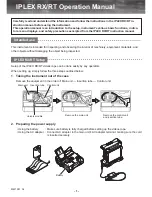
40
■
3.3–3b: UTILITY
☞
“Write Combination,” “Solo Selected Timbre” (1.1–1c)
Sets the Top/Bottom Velocity parameters to specify the
range of velocities that will sound each timbre 1–8, and sets
the Top/Bottom Slope parameters to specify the range over
which the volume will change.
By setting two or more timbres to velocity zones that do not
overlap, you can use variations in playing dynamics to play
different sounds (Velocity Switch).
If you set two or more timbres to velocity zones that overlap,
the sounds will be heard together (Layer).
If the slope ranges (gray line) overlap, different sounds will
be sounded together, and your playing dynamics will deter-
mine the proportion of each sound (Velocity Cross-fade).
3.4–1: Vel
(Velocity Zone)
3.4–1a: Velocity Zone Map (1)
This displays the range of velocities that will sound the cur-
rently selected timbre. The range of velocities sounded is
shown as a line, and the slope portion is shaded.
3.4–1b: Top Velocity, Bottom Velocity
Top Velocity
[1…127]
Specifies the maximum velocity value that each timbre 1–8
will sound.
Bottom Velocity
[1…127]
Specifies the minimum velocity value that each timbre 1–8
will sound.
You can also set this parameter by holding down the
[ENTER] key and playing a note.
It is not possible to set the bottom velocity greater than
the top velocity for the same timbre. Nor can the top
slope and the bottom slope overlap.
■
3.4–1c: UTILITY
☞
“Write Combination,” “Solo Selected Timbre” (1.1–1c)
3.4–2: Slope
(Velocity Slope)
3.4–2a: Top Slope, Bottom Slope
Top Slope
[0…120]
Specifies the number of velocity steps over which the origi-
nal volume will be reached, starting from the Top Velocity.
0:
The volume will be at the original value from the top
velocity.
120:
The volume will decrease as the velocity approaches the
top velocity.
Bottom Slope
[0…120]
Specifies the number of velocity steps over which the origi-
nal volume will be reached, starting from the Bottom Veloc-
ity.
0:
The volume will be at the original value from the bottom
velocity.
120:
The volume will decrease as the velocity approaches the
bottom velocity.
How volume will change according to key position
■
3.4–2b: UTILITY
☞
“Write Combination,” “Solo Selected Timbre” (1.1–1c)
3.4–3: Review
3.4–3a: Velocity Zone Map (All)
T1...T8
Displays the range of velocities that each timbre will
respond to.
The range of velocities sounded is shown as a line, and the
slope portion is shaded.
■
3.4–3b: UTILITY
☞
“Write Combination,” “Solo Selected Timbre” (1.1–1c)
COMBI 3.4: Ed–Vel Zone
(Velocity Zone)
3.4–1a
3.4–1b
3.4–1c
Bottom Velocity
Top Velocity
Bottom Slope
Top Slope
3.4–2a
3.4–2b
Bottom Slope
Top Slope
Bottom Velocity
Top Velocity
Velocity
Volume
3.4–3a
3.4–3b
Summary of Contents for TRITON Le
Page 1: ...2 E ...
Page 37: ...30 ...
Page 127: ...120 ...
Page 161: ...154 ...
Page 217: ...210 ...
Page 233: ...226 ...
Page 259: ...252 ...
















































